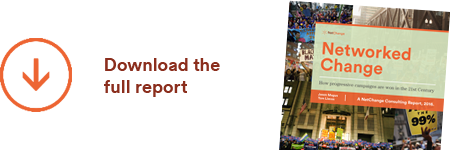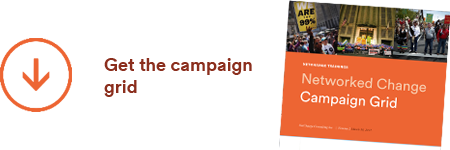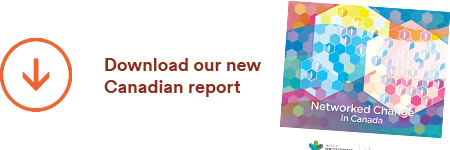For most of us the holidays bring much needed downtime from our busy lives, offering time for reflection, visioning, and planning for the road ahead. The big stories last year will no doubt continue in 2011: massive change and uncertainty is the norm, power continues to shift from big, old, closed institutions (even countries) to newer and more nimble ones, and collaboration, the web and networks are enabling these structural shifts like never before.
Isn't it time to take a fresh look at your organization's digital program to put you on the right side of these historic shifts?
My colleague Lauren Bacon and I developed this "five important things" list to support our recent workshops, as takeaways on how managers can start to radically alter their organization's online program. The list is oriented towards senior managers in communications, fundraising, or IT: people whose decisions and perspective either greatly enable or limit innovation and experimentation in digital engagement. Our experience as senior advisors to dozens of institutions large and small has proven their impact.
1. Shift Your Perspective
First thing's first: it's time to change how you view the Internet. The web represents your entire organization to the world. It's more than a brochure on the Internet; it's everything you do. Increasingly, it's the primary channel where your audiences and stakeholders are hearing about you, getting information, and getting things done.
And it's not happening only on your website, digital is everywhere your brand or your issues play out in your constituent's lives: through social media, on other websites where they spend time, in the blogosphere, traditional media sites, on mobile phones, and more. This is known as the "digital experience". Smart organizations manage across many different channels, and view the web as a network, not a node.
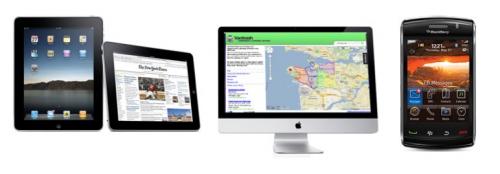
They use the real time information gleaned from network conversations to guide where their online program or even larger programs and campaigns can learn, adapt, and grow next. But to even start down this road, senior leaders need to care about digital and see it as core to their organization's business (and maybe its future?), and pay attention.
Questions:
- What are your strongest performing digital channels? How do your metrics stack up against your peers?
- What patterns and ideas are your online team gleaning from your engagement metrics, and through open feedback channels like Facebook?
- Do the senior people responsible for the web show an interest in how digital tools are changing the face of communications, and even affecting organizational and campaign models?
2. Connect Digital to Strategy — Everyone's
This may seem obvious, but it's amazing how many digital programs are run as silos, with resources spent on new directions driven by shiny technical opportunities, and little executive direction to connect back to the big picture. We also see a lot of under-funding of core programs, with tiny, overworked online teams responsible for too much, even though they are often doing heavy lifting for many different silos.
To have a high performing digital program, first make sure there is a coherent and clear connection of your digital tactics to your core organizational goals, messages, campaigns, and priorities. Ensure business goals from not only marketing but all key departments are driving changes to digital, and sharing in the investment. And importantly, track performance with clear non-technical metrics that the departments understand, and ideally can co-own. Digital supports everyone, so everyone needs to pay attention to how it is helping them succeed.
Questions:
- Why are you online / in social media / using email? How does this support the core mission and business goals of your institution?
- How closely do your current channels reflect the most exciting and successful areas of your business? Are resources over-invested in legacy programs at the expense of emerging ones?
- What Key Performance Indicators for digital are you tracking? Are they communicated to senior leaders across departments to create excitement and co-ownership of outcomes?
3. Enable a Responsive & Holistic Structure
In the early days of the web many organizations distributed digital budgets and ownership through many departments, resulting in a chaotic, unfocused, inefficient system. More recently, organizations have approached digital like a channel, with smart people running it within one group that centralizes resources and control. Unfortunately while these teams do a great job of seeing and supporting the entire organization, they are typically forced to work within the old silo'd, often dysfunctional and politicized structures, which limits their impact.
 The web is an open, responsive, and rapidly self-organizing network, which means it works best when managed as such. Leading organizations today approach digital as a system, with a central digital team providing direction but with innovation and even some execution shared with public-facing internal departments. Digital shops should set the rules, suggest new ideas, and execute key projects. But even the best resourced central teams shouldn't command and control all digital content, tools, and creativity, as this can stifle innovation, lock up on the ground expertise, and slow responsiveness.
The web is an open, responsive, and rapidly self-organizing network, which means it works best when managed as such. Leading organizations today approach digital as a system, with a central digital team providing direction but with innovation and even some execution shared with public-facing internal departments. Digital shops should set the rules, suggest new ideas, and execute key projects. But even the best resourced central teams shouldn't command and control all digital content, tools, and creativity, as this can stifle innovation, lock up on the ground expertise, and slow responsiveness.
Questions:
- Does your digital team have the appropriate authority, cross-organizational mandate, and leadership abilities to support and even lead projects across the entire organization?
- Do they have an effective way of prioritizing new ideas so they can focus on high leverage projects? Can they say no to unviable or off-strategy ideas that drain focus?
- Does your social media policy encourage innovation and leadership from multiple places within the organization, unlocking the people with the expertise your audiences crave?
4. Bow to the King: Content
With the blossoming of new digital channels over the past few years, one thing remains true across all of them — content is still king. Audiences expect a different kind of storytelling these days, and if you don't compel them, quickly, about the big ideas behind your product/cause/campaign, you miss your opportunity to connect. And in an age of too many channels and a general distrust of marketing, you need to reach them where they spend time, and on their terms.
An integrated content strategy, grown from your deepest areas of expertise, tied to your positioning and strategic goals, and rolled out differently across different platforms will ensure your mediums build off of, rather than compete with, each other. The good news? If you settle on a few key messages relevant to your audiences that are repeated in creative ways by multiple voices, you will break through. And storytelling can be taught, if it's made a priority for staff, and doing it in the digital age is much less expensive than traditional mediums.
Questions:
- Where does your organization "naturally" produce compelling content? Are those people empowered to write/capture stories about what they are doing?
- What are the stories that influence the change you seek? Look for stories with emotional impact, personality, and a vision for a better world.
- How and in what mediums are your stories best told? Consider different mediums and models for sharing information, especially rich media videos, photos, podcasts, blog posts, data visualizations, and, increasingly, mobile accessible content
- Does your organization value and fund storytelling, content creation, and sharing across departments? Are people too busy to do it?
- Are you making your stories easy to share?
- Do you have the right people in the organization capturing and disseminating stories in new mediums? What about the under-utilized Millennials you have in your office right now who would die for the chance to do meaningful work?
5. Integrate Network Thinking into internal processes
Digital strategies aren’t just for communication with external stakeholders; technology can facilitate knowledge sharing, collaboration and productivity wit
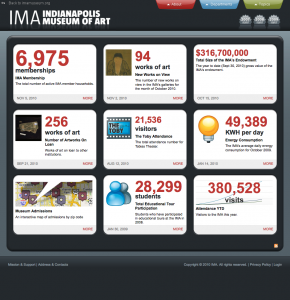
- How are you currently supporting your team’s knowledge sharing efforts? Do all staff members have a way to document their areas of expertise in a way that’s accessible to anyone within the organization?
- What methods are you using to track your critical numbers (memberships, donations, event attendance, etc.)? Are those numbers available to your staff and board (and perhaps the public)?
- How can data collection and cataloguing tools support your work better? If you work with surveying, polling, member and donor data, or primary research, are there online or mobile tools that could improve the ease of collection, storage and reporting?
- What opportunities are available for taking advantage of the collective wisdom of your team? Could social intranets, online polls or surveys help you streamline internal communication and open up internal conversations to be more inclusive and efficient?






